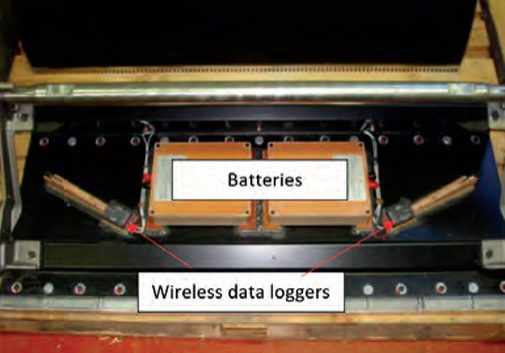20 Years of Innovation
Dec 1, 2020

Otis continues to build on the technology of its bestselling Gen2 elevator.
When Otis introduced the machine-room-less (MRL) Gen2® elevator in early 2000, it featured something entirely new: belts in place of steel cables — an innovation that allowed Otis engineers to create an efficient, compact machine that would fit easily inside the hoistway. The Gen2 elevator became an immediate success, with customers embracing its energy efficiency; space-saving design; and smooth, quiet ride.
Since, Otis has continued to evolve the Gen2 system, incorporating new features to meet the changing needs of customers and passengers in an increasingly digital world. This continuous innovation has helped fuel sales, which surpassed 1 million units in 2020, making the Gen2 the bestselling elevator in Otis’ 167-year history. Now, as the company celebrates the 20th anniversary of the Gen2 launch, it’s a good time to revisit the story behind its development: a drama-filled epic and the elevator industry’s version of the space race of the 1960s.
The idea of eliminating the machine room emerged in the 1990s during a time of intense competition and rapid innovation in the elevator industry. Until that time, elevator installations required a room to house the machine that drives the elevator, along with the controller, drive and other equipment. Eliminating that room would give architects greater design freedom, reduce “roof pollution,” cut construction costs and increase rentable space for building owners. The first MRL elevator was introduced in 1996, and it was against this backdrop that a team of Otis engineers from around the world convened in Connecticut to brainstorm concepts for a new elevator. From this gathering, the idea of using flexible, steel-reinforced polyurethane belts emerged.
Unwinding the Cable
Because steel ropes are relatively rigid, they require a large sheave to increase the bending radius and reduce stress on the cables. Modern safety codes dictate a 40:1 ratio between the diameter of the drive sheave to the diameter of the cable. In other words, sheaves must have a diameter at least 40 times the diameter of the suspension cable. Thus, a typical 1/2-in. cable requires a 20-in.-diameter sheave. Flat belts presented a way to radically reduce the size of the sheave, while meeting the 40:1 code requirement: engineers would keep the cable, but unwind the individual strands, lay them side by side and encase them in polyurethane — an organic polymer known for its flexibility, strength, durability and heat resistance. The belts Otis created were thinner than 3 mm (1/8 in.). (Cables are still used for high-rise and super-high-rise applications.)
The thin belts gave Otis the freedom to dramatically reduce the size of the machine sheave, to less than 5 in. in diameter – about 85% smaller than the sheave of the machine it replaced. The smaller sheave, in turn, meant much less torque was required to drive the machine. The Gen2 machine is compact enough to fit on a crossbeam at the top of the hoistway, eliminating the need for a separate machine room. Without a machine room, the controller and drive can go anywhere, as long as they are within a certain distance of the machine.


Ride Quality
The Gen2 elevator delivers a smooth, quiet ride. First, the steel-reinforced polyurethane belts did away with a source of noise sometimes referred to as “rope sing”: the whir or hiss created by the metal-to-metal contact of steel ropes moving over the metal sheave. Otis also redesigned the car itself to improve ride quality, even as its overall weight was reduced. This cut both energy consumption and operating costs. Engineers designed a sturdier car frame to minimize vibration and a new ventilation system to bring fresh air into the cab while muffling noise. Noise and vibration were further reduced when the sliders that keep the elevator car on the rails were replaced with high-quality, low-friction roller guides. Special isolation pads under the machine muffle the sound it produces, and with the relays mostly eliminated, even the controller is quiet.
Sustainability
The Gen2 elevator also represented a commitment to green technology. Its highly efficient permanent-magnet synchronous motor reduced energy consumption by 50% compared to the induction machine system it replaced. An even greater improvement in the Gen2’s overall energy efficiency was realized later with the addition of the ReGen® regenerative drive technology, which had previously been available only on high-rise systems. When these systems are combined with other energy-efficient features, such as LED lighting, overall energy consumption can be reduced by 75% under normal operation, compared to that of conventional geared machines with non-regenerative drives. ReGen drives today are standard on all Otis Gen2 and SkyRise® elevator systems.
The Gen2 elevator also features permanently sealed bearings, eliminating a source of hazardous waste. No additional lubrication is needed, nor do the belts themselves require lubrication.
Mechanical to Digital
The latest models of the Gen2 elevator are based on the original Gen2, sharing the same flat-belt technology and efficient machine, but are smarter and more connected. Today’s Gen2 elevators generate massive amounts of data with every trip, and this data improves support for customers and passengers. For example, the Otis ONE® digital service platform uses big data analytics and proprietary algorithms to help predict and prevent shutdowns. Similar intelligence and connectivity powers the eCall® smartphone app, touchless technology that reduces wait time by allowing passengers to summon their elevator from anywhere in the building so it is there waiting for them when they arrive. In addition, the eView® streaming service delivers news and entertainment directly to an in-car display for passengers to enjoy during the ride. It also allows building managers to deliver important information to tenants.
The Gen2 elevator was introduced in Europe in 2000, and the first units were installed in Linz, Austria. Twenty years later, Gen2 elevators can be found in nearly every one of the 200 countries and territories where Otis does business.

Configurations can be tailored to specific needs of a given location, whether it’s for a residential or commercial building, mixed-use tower, retail setting, hotel, hospital, metro system or airport. Initially designed for low- and mid-rise buildings, the Gen2 elevator is now available in some areas of the world for high-rise buildings up to 150 m. There is even a model that operates on battery power. Aesthetic options allow customers to design stylish cab interiors that complement the character of their buildings.
Gen2 elevators have been installed in some of the world’s most iconic supertall and megatall buildings. At the Empire State Building, for example, a custom-made glass Gen2 elevator carries visitors from the 86th floor to the refurbished 102nd-floor observatory. At Seoul’s Lotte World Tower, certain Gen2 elevators are designated “lifeboats,” programmed to travel in an emergency between safe evacuation zones and the ground floor. Dubai’s Burj Khalifa (currently the world’s tallest building), Shenzhen’s Ping An Finance Center, Tour Carpe Diem in Paris and London’s 22 Bishopsgate also feature Gen2 elevators.
As COVID-19 turned into a global crisis, Otis worked to meet new requirements and needs. Touchless solutions, purifying systems, remote monitoring and the novel deployment of dispatching technologies to support social distancing all show the Gen2 system’s adaptability in the face of the pandemic. Looking to the future, Otis engineers continue to reimagine the Gen2 elevator. The company is preparing to introduce a new elevator platform based on the Internet of Things but built around 20 years of innovations and refinements that have focused on improved reliability and passenger comfort.
Get more of Elevator World. Sign up for our free e-newsletter.









